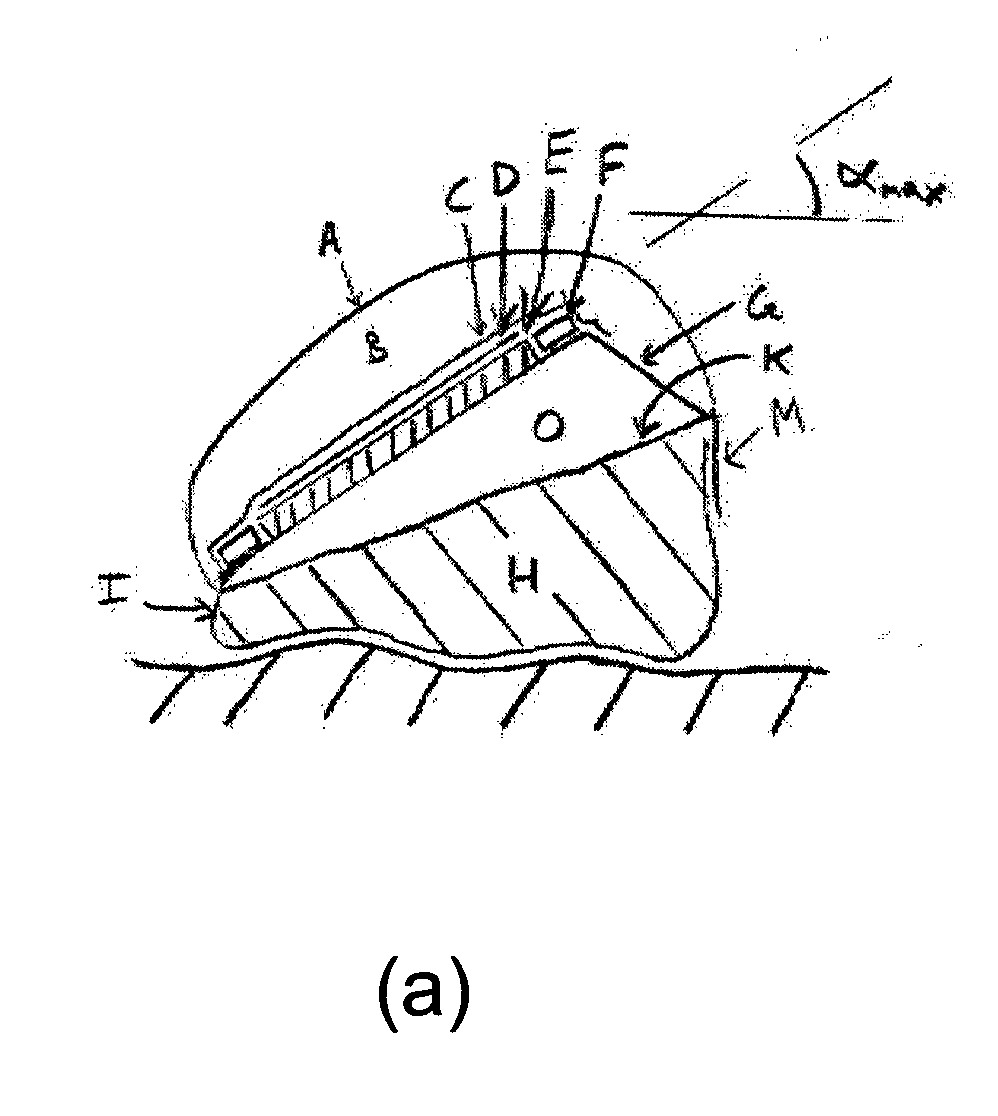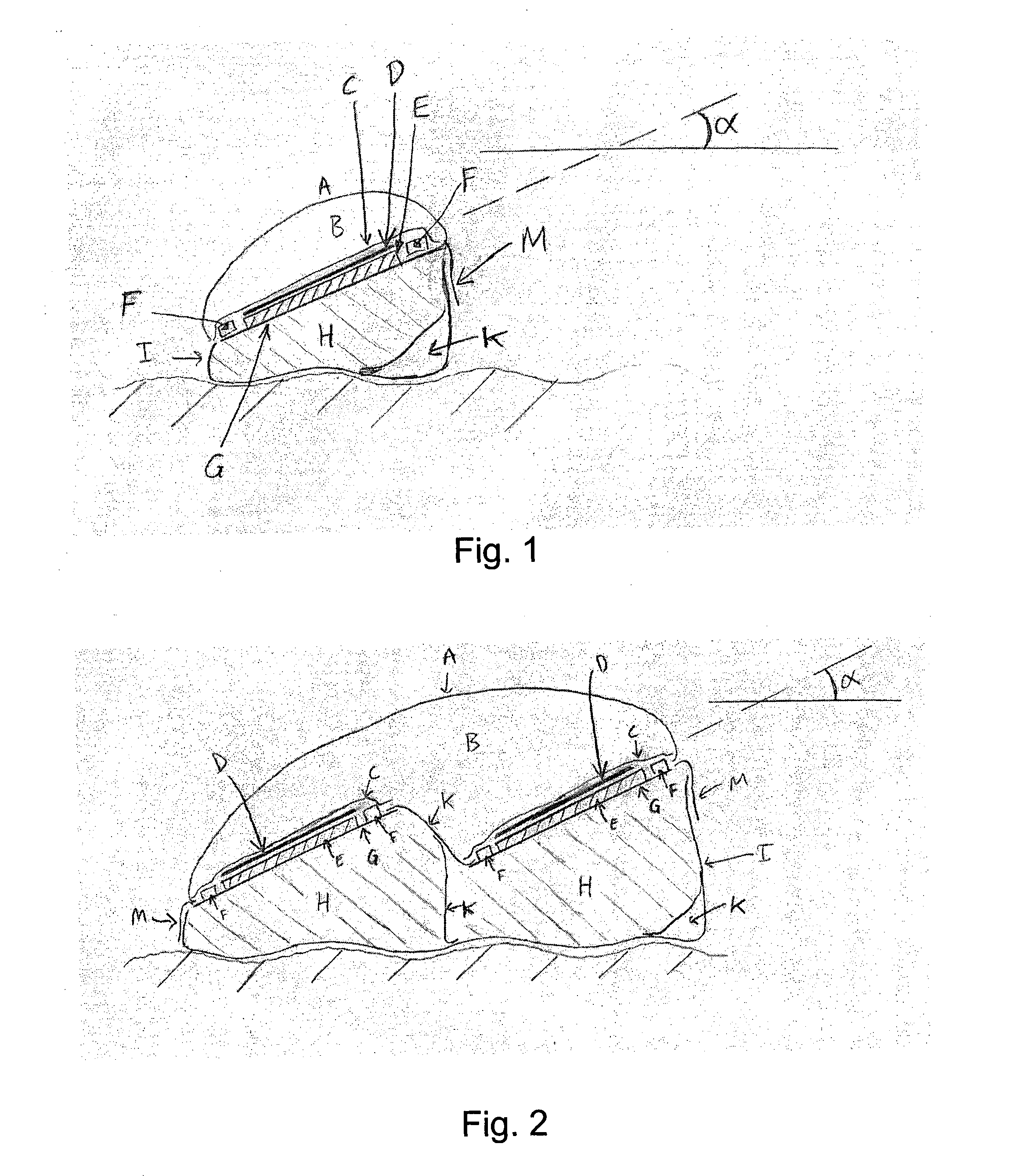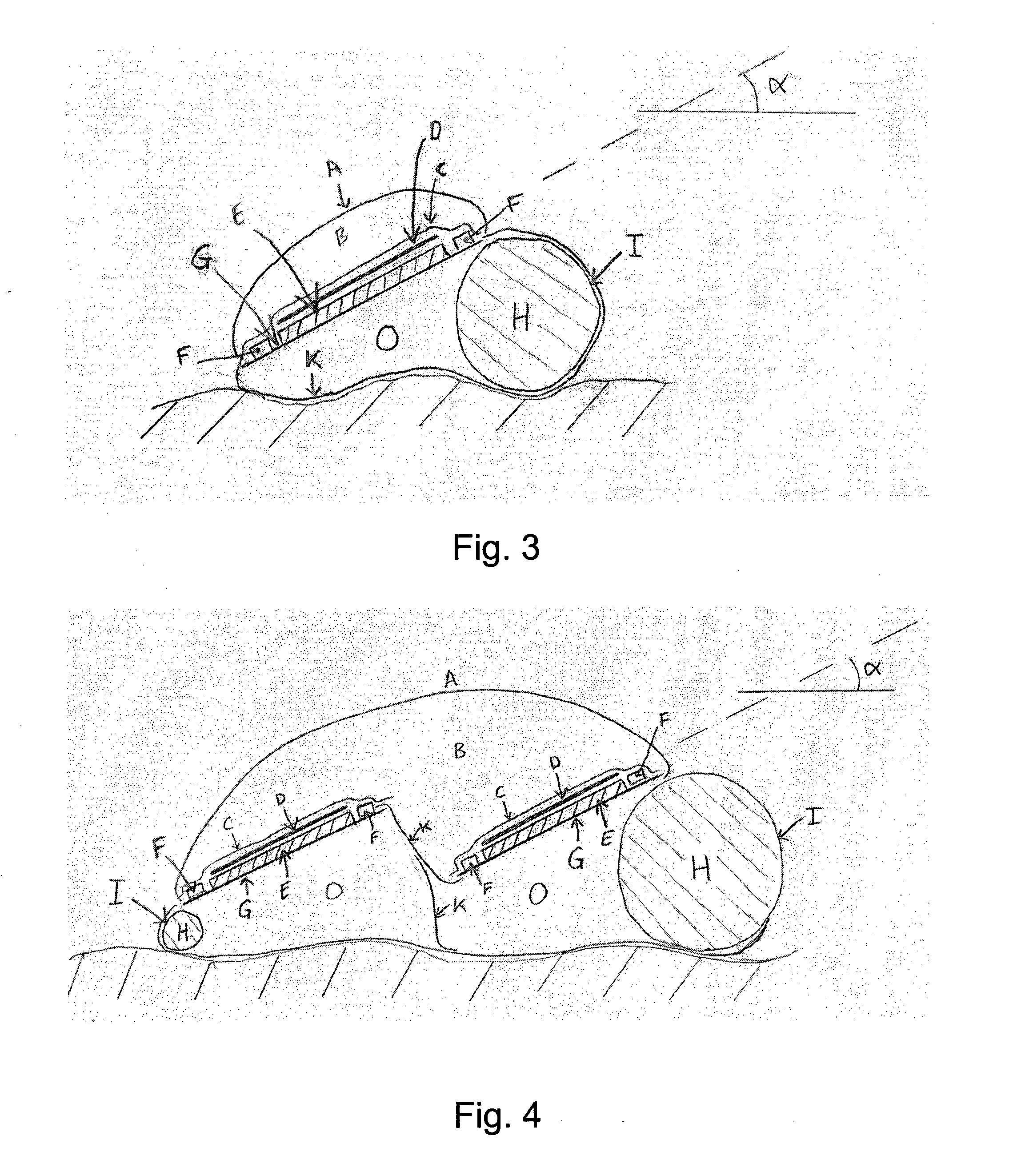Collapsible Photovoltaic Module for a Large-Scale Solar Power Plant
a photovoltaic module and solar power technology, applied in photovoltaics, solar heat collectors for particular environments, heat collector mounting/support, etc., can solve the problems of high cost, high construction cost, and high electrical power requirements of traditional pv power plants, so as to improve the efficiency of incident light conversion to electrical power output of a particular pv-module, the effect of simple implementation
- Summary
- Abstract
- Description
- Claims
- Application Information
AI Technical Summary
Benefits of technology
Problems solved by technology
Method used
Image
Examples
example 1
[0095]If using industry-standard 6 inch by 6 inch c-Si PV-cells to fabricate PV-modules as described in this invention three 250 m long modules would be able to power the three (1 kV Uoc), 12 A (Isc)) inputs of a Danfoss string inverter model “Triple Lynx Pro 15 k” with more than 15 kW NOCT (Normal Operating Conditions and Temperature) —(or 17.6 kW STC (Standard Test Conditions)) which is ideal for this inverter. In this configuration the three PV-modules according to the present invention may replace a total of 72 traditional PV-modules of 220 W nominal power each. Up to 42 such inverters (thus fed by three PV-modules each) could then be coupled directly on an industry standard transformer (630 kW, 10 kV) for further connection within the PV power plant as described in the data sheet for the inverter [Danfoss Solar Inverters NS, Concept Paper, “String inverters for PV power systems” (2009)].
PUM
| Property | Measurement | Unit |
|---|---|---|
| electric power | aaaaa | aaaaa |
| electrical power | aaaaa | aaaaa |
| length | aaaaa | aaaaa |
Abstract
Description
Claims
Application Information
 Login to View More
Login to View More - R&D
- Intellectual Property
- Life Sciences
- Materials
- Tech Scout
- Unparalleled Data Quality
- Higher Quality Content
- 60% Fewer Hallucinations
Browse by: Latest US Patents, China's latest patents, Technical Efficacy Thesaurus, Application Domain, Technology Topic, Popular Technical Reports.
© 2025 PatSnap. All rights reserved.Legal|Privacy policy|Modern Slavery Act Transparency Statement|Sitemap|About US| Contact US: help@patsnap.com



